#new york city history
Photo

#Berenice Abbott#automat#the automat#'50s#1950s#loneliness#atomization#isolation#All The Lonely People#nyc#New York City#New York City history#NYC History#photography#classic photography#great photographs#great photographers#NYC Psychogeography
66 notes
·
View notes
Photo

Bergdorf Goodman ad circa 1922.
19 notes
·
View notes
Text






Philippe Petit on a cable suspended between the twin towers of the World Trade Center in lower Manhattan on Aug. 7, 1974
#philippe petit#tightrope#tightrope walker#new york city#new york city history#twentieth century history#twin towers#world trade center#manhattan#august#1970s#1974#buisness insider#article#website#black and white photography#photography#portrait
18 notes
·
View notes
Text

Bobby Short
#history#vintage#portrait#color photography#photography#bobby short#saloon singer#singer#pianist#musician#performer#african american history#black history#new york city#new york city history#jazz#cabaret singing#cabaret#entertainer
3 notes
·
View notes
Text

I've been meaning to post about this beautiful building at 207 East 32nd Street in the Murray Hill neighborhood. Until recently it was under renovations after being purchased by the New York Times Review of Books (NYRB) in 2020. Prior to the NYRB, the building was owned by famed graphic designer and Bronx-born Milton Glaser (June 26, 1926 - June 26, 2020.)

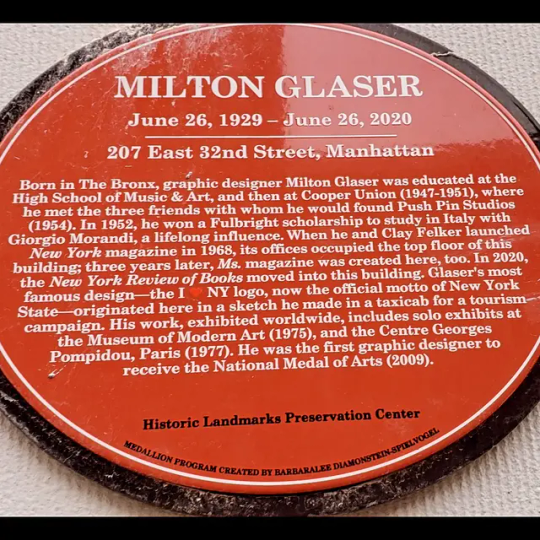
Glaser bought the 1902 Beaux-Arts building in 1965 which was initially built for the famed (or infamous) New York political machine Tammany Hall. According to legendary New York Times writer Christopher Grey in his post "Where the Ghosts Smoke Cigars" from Streetscapes dated December 19, 2013.
"The architect, Robert T. Lyons, developed an exuberantly French facade of red brick and limestone, with a mansard roof; although showy for 32nd Street east of the Third Avenue El, it was worthy of any lot on Fifth Avenue. Lyons presumably gave it a few smoke-filled rooms, and it also had a top-floor gymnasium, card rooms and an assembly hall for political conventions."
After Tammany Hall, the building was used by the City of New York as a courthouse.
Aside from being co-founder of New York Magazine in 1968 (with Clay Felker,) Glaser is arguably best known for his iconic "I ❤ NY" logo.
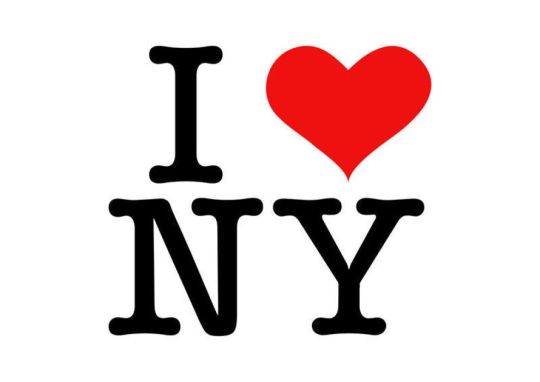
Glaser is believed to have created the logo during a cab ride and it started being used in 1977. Glaser created the logo with the best interests of New York City at heart during a dark period in the city's history when crime was rampant, nearing bankruptcy and the metropolis was being referred to as "Fear City." Glaser created the logo on a pro-bono basis.
The renovation of the building was completed in February of this year with Glaser's "Art is Work" remaining part of the new front door.

#Milton Glaser#I Love NY#I❤NY#Tammany Hall#Architectural History#New York History#NY History#History#Historia#Histoire#Geschichte#HistorySisco#New York City History#NYC History
1 note
·
View note
Text
Broadway Unmasked: Behind the Theatre District's Meteoric Rise
Broadway is an iconic part of American culture, a place where dreams come true and stories are brought to life. From its humble beginnings as a small collection of theaters in the late 19th century, Broadway has grown into one of the most renowned theater districts in the world.
But what led to its meteoric rise? What challenges did it face along the way? And how did it become such a beloved…

View On WordPress
0 notes
Photo

https://archive.org/details/YoungLordsTheYoungLordsAReader/mode/2up
#politics#the 60s#society#puerto rico#history#chicago history#new york city history#nyc history#el barrio#the bronx#the 70s
1 note
·
View note
Text

Today’s Exhibit of the Day? The Museum’s giant amethyst geode. Standing 9 ft (2.7 m) tall and weighing around 11,000 lbs (5,000 kg), it’s one of the largest specimens in our halls. How did this dazzling geode come to be? About 135 million years ago, the continental plates carrying South America and Africa began to separate. Magma poured out from fractures in Earth’s crust and large gas bubbles escaped from within the magma—becoming trapped in the rock as it solidified, forming cavities. Groundwater flowing into these spaces brought dissolved silica, which crystallized into quartz. Over millennia, most of these quartz crystals turned into rich purple amethyst. Spot this and other amazing specimens in the Museum’s Mignone Halls of Gems and Minerals!
Photo: D. Finnin/ © AMNH
#science#amnh#museum#nature#natural history#gems#minera#geology#fact of the day#cool facts#rocks#geode#amethyst#purple#things to do in new york city#nyc museums
2K notes
·
View notes
Text
Life in tenements during the early 20th century
Life in tenements during the early 20th century
Due to a great influx of immigrants, New York City’s population increased dramatically throughout the late 1800s and early 1900s. In Manhattan, most of this growth was taking place in the Lower East Side and in the Hell’s Kitchen neighborhoods. Though tenements were first becoming common in these areas, they were also spreading throughout other parts of Manhattan and Brooklyn.
As more people…

View On WordPress
0 notes
Text
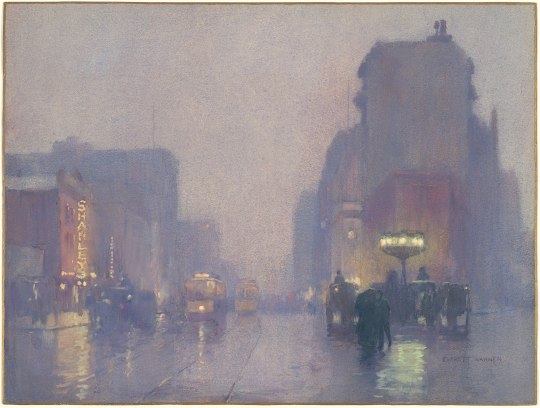
Broadway on a Rainy Evening, Everett Warner, 1901
#art#art history#Everett Warner#Everett L. Warner#cityscape#rain#rain scene#Broadway#New York#New York City#NYC#Old New York#Gilded Age#American art#20th century art#watercolor#gouache#pastel#National Gallery of Art#Corcoran Collection
1K notes
·
View notes
Text
The Architecture of Rain World: Layers of History
A major theme in Rain World's world design that often goes overlooked is the theme of, as James Primate, the level designer, composer and writer calls it, "Layers of History." This is about how the places in the game feel lived-in, and as though they have been built over each other. Here's what he said on the matter as far back as 2014!

The best example of this is Subterranean, the final area of the base game and a climax of the theme. Subterranean is pretty cleanly slpit vertically, there's the modern subway built over the ancient ruins, which are themselves built over the primordial ruins of the depths. Piercing through these layers is Filtration System, a high tech intrusion that cuts through the ground and visibly drills through the ceiling of the depths.
Two Sprouts, Twelve Brackets, the friendly local ghost, tells the player of the "bones of forgotten civilisations, heaped like so many sticks," highlighting this theme of layering as one of the first impressions the player gets of Subterranean. Barely minutes later, the player enters the room SB_H02, where the modern train lines crumble away into a cavern filled with older ruins, which themselves are invaded by the head machines seen prior in outskirts and farm arrays, some of which appear to have been installed destructively into the ruins, some breaking through floors.
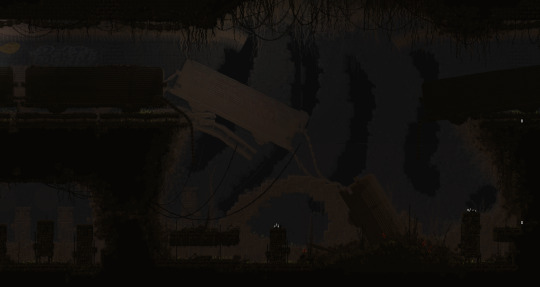

These layers flow into each other, highlighting each other's decrepit state.
The filtration system, most likely the latest "layer," is always set apart from the spaces around it. At its top, the train tunnels give way to a vast chasm, where filtration system stands as a tower over the trains, while at the bottom in depths, it penetrates the ceiling of the temple, a destructive presence. (it's also a parallel to the way the leg does something similar in memory crypts, subterranean is full of callbacks like that!)


Filtration system is an interesting kind of transition, in that it is much later and more advanced than both of the areas it cuts between. This is a really interesting choice from James! It would be more "natural" to transition smoothly from the caves of upper subterranean to the depths, but by putting filtration system in between, the two are clearly demarcated as separate. The difference in era becomes palpable, the player has truly found something different and strange.
Depths itself is, obviously, the oldest layer not only of subterranean but of the game itself. The architecture of Depths has little to do with the rest of the game around it, it's a clear sign of the forgotten civilisations that our friend Two Sprouts, Twelve Brackets showed us, there's not actually that much to say about it itself, it's mostly about how it interacts with the other layers of subterranean.
That said, Subterranean is far from the only case of the theme of layers of history. It's present as soon as the player starts the game!
The very first room of the game, SU_C04, is seemingly a cave. It is below the surface, the shapes of it are distinctly amorphous rather than geometric. (well. kind of, it doesn't do a very good job of hiding the tile grid with its 45 degree angles.)

But let's take a closer look, shall we?

See that ground? it's made of bricks. The entire cave area of outskirts is characterised by this, the "chaotic stone" masonry asset is mixed with brickwork, unlike the surface ruins which are mostly stone. This, seemingly, is an inversion of common sense! The caves are bricks and the buildings are stone. This is not, however, a strange and unique aspect but a recurring motif.
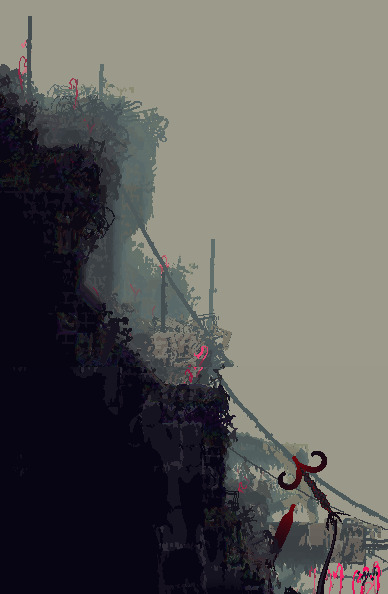
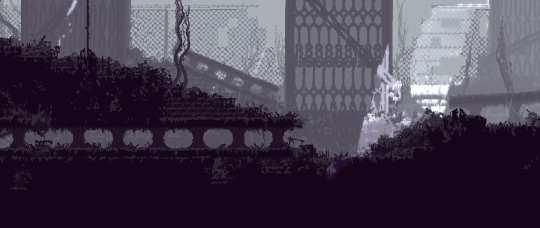
This occurs enough in the game for it to be clearly intentional, but why would materials such as bricks be used in otherwise natural looking terrain?
The answer lies in the "Layers of History" theme. This is in fact, something that happens in real life, and it's called a tell
To be specific, a tell is a kind of mound formed by settlements building over the ruins of previous iterations of themselves. Centuries of rubble and detritus form until a hill grows from the city. Cities such as Troy and Jericho are famous examples. The connections to the layers of history theme are pretty clear here, I think. Cities growing, then dying, then becoming the bedrock of the next city. The ground, then, is made of bricks, because the ground is the rubble of past buildings. The bones of forgotten civilisations, heaped like so many sticks!
#rain world#rainworld#rain world lore#rainworld lore#rw lore#rw#subterranean my beloved#thank you to videocult for making the first survival game themed around stratigraphy and new york city rats#i would've gone on for another paragraph about how OE relates to this but like.#that's dlc stuff#and i still think of the dlc stuff as modded content lol#better to keep it separate#also this analysis is not comprehensive! the layers of history stuff is common throughout#there's farm arrays there's the relationship between shaded citadel and five pebbles there's the stuff buried under garbage wastes#so much more#unfortunately i do not have much energy lol
489 notes
·
View notes
Photo
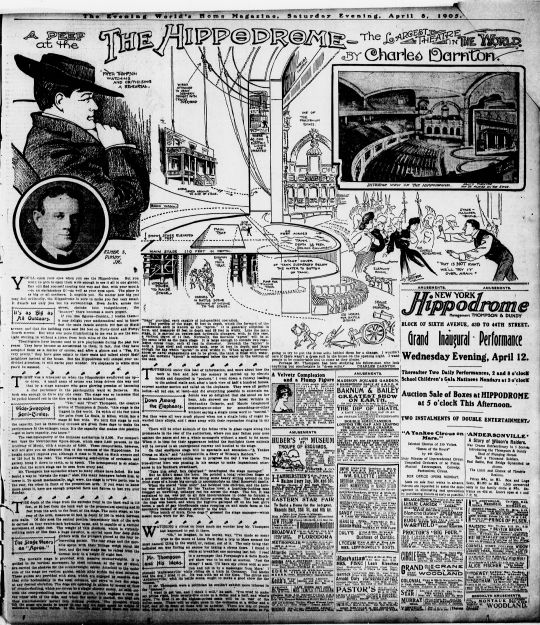
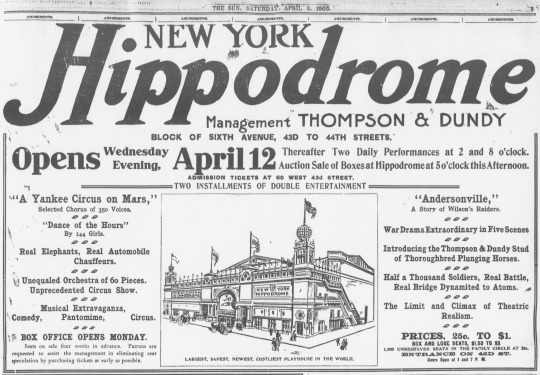


Advertisements and press prior to the opening of the New York Hippodrome on April 12, 1905
0 notes
Text

A FLASH BLACK MOMENT:
Harlem Debutante ball, 1940s………
#Debutante ball#harlem#nyc#harlem renaissance#new york#bronx#brooklyn#new york city#1940s#1940s movies#1940s style#1940s ad#1946#Instagram#BlackExcellence#Mood for every month especially black history month ✊🏾✊🏿✊🏽#blacklivesmatter✊🏽✊🏾✊🏿#black lives matter#blm#black lives fucking matter#black lives movement#all black lives matter#black history month#i’m black
393 notes
·
View notes
Text
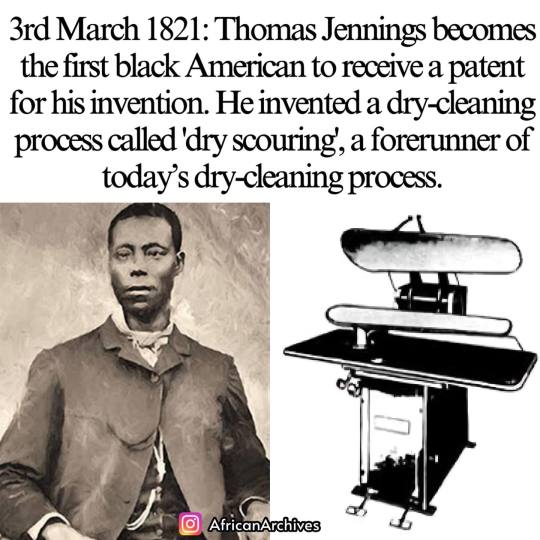
Thomas Jennings was a free man born in 1791 in New York City. He was 30 years old when he was granted a patent for a dry cleaning process. In his early 20s Thomas Jennings became a tailor, and later opened a dry cleaning business in the city. As a tailor. Jennings' skills were so admired that people near and far came to him to alter or custom tailor items of clothing for them. Eventually, Jennings reputation grew such that he was able to open his own store on Church street which grew into one of the largest clothing stores in New York City.
While running his business Jennings developed dry-scouring. He had many customers complain of their clothes being ruined by stains and so he began experimenting with cleaners and mixtures that would remove the stains without harming the material. He earned a large amount of money as a tailor and even more with his dry scouring invention and most of the money he earned went to his abolitionist activities. In 1831, Thomas Jennings became assistant secretary for the First Annual Convention of the People of Color in Philadelphia, PA.
Thomas L. Jennings Dry Scouring technique created modern day dry cleaning. Jennings was fortunate that he was a free man at the time of his invention. Besides all the other indignities and cruelties slaves had to face, they were also ineligible to hold a patent. Under the US patent laws of 1793 a person must sign an oath or declaration stating that they were a citizen of the USA. While there were, apparently, provisions through which a slave could enjoy patent protection, the ability of a slave to seek out, receive and defend a patent was unlikely. Later, in 1858, the patent office changed the laws, stating that since slaves were not citizens, they could not hold a patent. Furthermore, the court said that the slave owner, not being the true inventor could not apply for a patent either.
Thomas Jennings died in New York City in 1856.
#black history#Thomas Jennings#dry cleaning#inventor#tailor#abolitionist#New York City#patent law#slavery#abolitionist activities#dry scouring technique#historical injustice#patent discrimination#civil rights activism#African American entrepreneurship#19th century America
389 notes
·
View notes
Text

1924, A family in Harlem, New York City, photo by James Van Der Zee
#african#afrakan#kemetic dreams#brownskin#afrakans#africans#brown skin#african culture#african american#african american history#harlem#new york city#james van der zee
494 notes
·
View notes